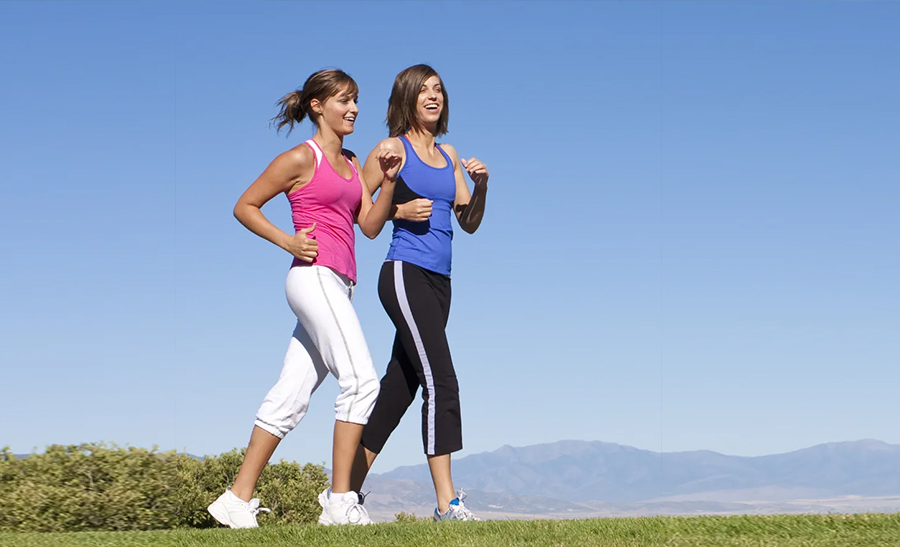Sleep anxiety and how to beat it
- 04 May - 10 May, 2024
Your fitness goals may be hampered by the summer's heat and humidity. There are other ways to stay cool during warm-weather exercises in addition to moving your plans indoors into an air-conditioned area. Many people may still exercise safely outside during the sweltering summer months with little preparation and safety measures. Start with comprehending how your body is impacted by heat, both external and internal.

Here are some signs that you are experiencing heat exhaustion or heatstroke and should seek immediate medical attention:
• Nausea or vomiting
• High body temperature (103 degrees F or higher)
• Hot, red, dry, or damp skin
• Fast, strong pulse
• Headache, dizziness, or confusion
• Passing out
What can you do to prevent overheating while exercising outside during the summer? Here are some tips.
No of your level of fitness, it takes time for everyone to adjust to the heat. According to one study, not doing so (together with low physical fitness and vigorous exercise) increases the risk of heat-related disease. Heat acclimation helps prevent the system from being shocked when training by allowing the body to adjust to operating in higher temperatures." By doing this, you'll be able to workout harder and longer while keeping your body temperature down while it's hot outside. Start with shorter workouts and gradually increase the duration and intensity over the course of 10 to 14 days, advises Olufade, to achieve this (when the weather begins to change or if you're travelling to a place with significantly warmer temperatures than you're used to). Avoid doing long or intensive workouts outside in the heat unless you've gotten used to it.
Everyone reacts to heat differently due to a variety of factors (age, genetics, degree of fitness, other health conditions), but some groups need to take particular care. Those who are typically more vulnerable to heat-related sickness include:
• Older adults
• People who don’t often work out
• People with preexisting health conditions like heart disease
• People with acute illness like fever and upper respiratory infections
• People taking certain medications, such as diuretics and COPD medications
If this is you, you’ll need to be extra cautious about exercising in heat. Sometimes it may be best to work out indoors with AC.
No matter the season, staying hydrated is crucial, but in hot weather it becomes even more crucial. You should consume at least 1 ounce (oz) of water for every 2 pounds (lb) of body weight whether or not you are exercising. Therefore, you should be consuming at least 100 oz of water per day if you weigh 200 weight. According to Penn Medicine, if you are exercising, you should attempt to drink an additional 12 oz of water a few hours before your workout and then again around 30 minutes prior. (That would be at least 124 oz of water on a workout day for a 200-lb person.) Water is always a good pre-workout beverage, but you can also sip electrolyte-containing beverages.
You can also increase your body’s hydration level by eating water-rich foods throughout the day. Water-rich foods include cucumbers, watermelon, strawberries, celery, raw mushrooms, tomatoes, zucchini, and summer squash.
When working out in the heat, avoid eating a big meal before exercise. Digesting food requires energy. Digestion creates more body heat, and pulls blood flow away from the muscles you’re working during exercise. If your body is trying to digest food and move vigorously at the same time, digestive discomfort can result, leading to a bummer of a workout.
Midday sun can add about 20 degrees to the temperature [depending on where you live and time of year. That means midday is usually the hottest point of the day. If you’re running, walking, or biking, choose a shadier route whenever possible, and avoid times when the sun is most intense, usually between 10 a.m. and 4 p.m.
COMMENTS